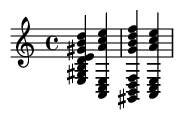Summary:
The harmonic minor scale is a crucial variation of the natural minor scale, defined by its raised seventh degree. This single alteration creates a distinctive augmented second interval, giving the scale its famously exotic, tense, and mysterious sound. A cornerstone of Western classical harmony, the harmonic minor scale is also essential in flamenco, neoclassical metal, film scores, and various world music traditions. This comprehensive guide delves into the scale's structure, harmonic function, historical context, and provides practical examples and exercises to help musicians master this evocative and powerful musical tool.
Keywords:
harmonic minor scale, music theory, augmented second interval, raised seventh, leading tone, minor keys, classical harmony, flamenco music, phrygian dominant, neoclassical metal, film scoring, music education
Introduction: What is the Harmonic Minor Scale?
In the rich landscape of musical scales, the harmonic minor stands out with a unique and powerful character. While the natural minor scale effectively conveys sadness or contemplation, the harmonic minor injects an electrifying dose of drama and tension. It achieves this through one simple but profound change: raising the seventh note of the scale by a half step.
This modification introduces an exotic-sounding "gap"—an augmented second interval—that immediately conjures images of ancient mysteries, dramatic confrontations, or far-off lands. It's the sound that gives a classical cadenza its bite, a flamenco melody its fire, and a metal solo its epic, neoclassical flair.
Historically, the harmonic minor scale wasn't created for its melodic flavor but to solve a harmonic problem. In tonal music, a strong sense of resolution comes from the "leading tone" (the seventh degree) pulling powerfully to the tonic. The natural minor scale lacks this, as its seventh is a whole step away from the tonic. By raising that seventh, composers created a true leading tone, allowing for a much stronger V-i (dominant-to-tonic) cadence, the bedrock of Western harmony. This made it possible to write compelling, functional harmony in minor keys.
From the intricate fugues of J.S. Bach to the fiery guitar of Paco de Lucía and the virtuosic solos of Yngwie Malmsteen, the harmonic minor scale is an indispensable tool for creating tension and emotional depth. This guide will explore its structure, the chords it generates, its use across genres, and how you can incorporate it into your own music.
Definition and Structure
The harmonic minor scale is built from the natural minor scale by raising the seventh scale degree by one semitone (a half step). Its formula, compared to the major scale, is: 1, 2, b3, 4, 5, b6, 7.
This creates a unique pattern of whole (W) and half (H) steps: W - H - W - W - H - W+H - H. The "W+H" represents the augmented second interval (equal to three half steps).
Let's look at the key of A minor. The A natural minor scale is:
A - B - C - D - E - F - G - A
To create the A harmonic minor scale, we raise the seventh note (G) to G#:
A - B - C - D - E - F - G# - A
A Harmonic Minor Scale Notation

The defining feature is that augmented second interval between the 6th and 7th degrees (F and G#) . This wide melodic leap is responsible for the scale's characteristic sound and can be challenging to sing or play smoothly, which is why the melodic minor scale was later developed for smoother melodic lines.
Scale Degrees and Their Functions
- Tonic (1st): The "home" note, the point of resolution (A).
- Supertonic (2nd): Foundation of the ii° chord (B).
- Mediant (b3rd): Establishes the minor quality of the scale (C).
- Subdominant (4th): Provides pre-dominant harmony (D).
- Dominant (5th): The foundation of the V chord, creating tension (E).
- Submediant (b6th): A key part of the subdominant sound and the augmented second (F).
- Leading Tone (7th): The raised seventh, creating strong harmonic pull to the tonic (G#).
Harmonic Function: The Chords of Harmonic Minor
The true power of the harmonic minor scale is revealed when we build chords (triads and seventh chords) on each of its degrees. The raised 7th creates a unique and colorful set of harmonies.
Seventh Chords in A Harmonic Minor
- i min(maj7): A minor-major 7th (A-C-E-G#) - A tense, film-noir tonic chord.
- ii°7 (iiø7): B half-diminished 7th (B-D-F-A) - A common pre-dominant chord.
- III+ maj7: C augmented-major 7th (C-E-G#-B) - A very exotic and colorful sound.
- iv min7: D minor 7th (D-F-A-C) - The familiar minor subdominant.
- V7: E dominant 7th (E-G#-B-D) - The crucial, tension-filled dominant chord.
- VI maj7: F major 7th (F-A-C-E) - A bright, complex submediant chord.
- vii°7: G# diminished 7th (G#-B-D-F) - An intensely dissonant chord that strongly resolves to the tonic.
The most important chords here are the V7 (dominant 7th) and the vii°7 (diminished 7th). Both contain the leading tone (G#) and tritone, creating powerful tension that resolves satisfyingly to the tonic i (minor) chord. This is the primary reason the scale exists.
Essential Cadences in A Harmonic Minor

The Harmonic Minor Scale in Action: Genre Examples
Classical Music
The harmonic minor is the default scale for harmony in minor keys from the Baroque period onward. Composers from Bach to Beethoven and beyond relied on it to create drama and strong resolutions.
- J.S. Bach - Toccata and Fugue in D Minor: A textbook example of dramatic, powerful minor key writing.
- W.A. Mozart - Symphony No. 40 in G Minor: The scale's tension fuels the work's passionate and turbulent character.
- L. van Beethoven - "Moonlight" Sonata (1st Mvt) : The haunting atmosphere is built upon the harmonic framework of C# harmonic minor.
Flamenco and "Spanish" Music
The characteristic "Spanish" sound is often derived not from the harmonic minor scale itself, but from its fifth mode: the Phrygian Dominant scale. In the key of A harmonic minor, the fifth mode starts on E, giving the notes: E - F - G# - A - B - C - D. This scale is fundamental to Flamenco music.
E Phrygian Dominant (5th Mode of A Harmonic Minor)

Neoclassical Metal and Rock
The harmonic minor scale became a staple of heavy metal in the 1980s, largely thanks to guitarist Yngwie Malmsteen, who fused classical harmony with rock technique. Its dramatic tension and suitability for fast, virtuosic runs made it a perfect fit for the genre.
- Yngwie Malmsteen: His entire style is built around harmonic minor and Phrygian dominant scales.
- Metallica - "Wherever I May Roam": The famous intro riff uses a scale closely related to harmonic minor to create its "Eastern" sound.
- Dream Theater: John Petrucci frequently uses harmonic minor for complex solos and riffs.
Film and Video Game Music
Composers use the harmonic minor as a powerful signifier. It's auditory shorthand for mystery, magic, danger, or exotic locations (particularly those inspired by the Middle East or Eastern Europe) .
Applying the Harmonic Minor Scale: Practice & Improvisation
Understanding the scale is one thing; using it is another. Here are some practical ways to internalize its sound and apply it to your instrument.
1. Emphasize the Characteristic Interval
Your first goal is to get the sound of the augmented second (b6 to 7) into your ear. Practice playing melodic fragments that move across this interval.
Augmented Second Melodic Idea
2. Practice Instrument-Specific Patterns
For Pianists
Focus on smooth fingering over the awkward gap. For A Harmonic Minor:
- Right Hand (Ascending) : 1-2-3-1-2-3-4-5
- Left Hand (Ascending): 5-4-3-2-1-3-2-1
For Guitarists
The harmonic minor scale is perfect for 3-note-per-string patterns, which are great for speed and legato playing. Here is a common shape for A Harmonic Minor starting on the low E string:
A Harmonic Minor (3-Note-Per-String Pattern) e|----------------------------------7-8-12-| B|-----------------------------9-10--------| G|------------------------9-10-------------| D|-----------------9-10-12-----------------| A|---------8-10-12-------------------------| E|-5-7-8-----------------------------------|
3. Improvisation Strategies
- Play Over a V7 Chord: The harmonic minor scale is the perfect choice for improvising over the V7 chord in a minor key progression. For example, play A harmonic minor over an E7 chord resolving to Am.
- Target Chord Tones: When the harmony changes, aim for the notes within that chord. Over the V7 (E7) chord, targeting the G# will sound powerful.
- Arpeggiate the Chords: Practice playing the arpeggios from the scale (i-min(maj7), V7, vii°7). This is a fast way to sound like you're "playing the changes."
- Mix with Other Minor Scales: Don't be afraid to switch between natural minor, harmonic minor, and melodic minor. Use natural minor for a more melancholic feel and switch to harmonic minor over the V7 chord to build tension before the resolution.
Example Metal Riff in E Harmonic Minor
This riff uses low, palm-muted notes and highlights the D# leading tone and the C natural (the b6), creating the classic metal sound.
Advanced Theory: The Modes of Harmonic Minor
For advanced players, exploring the modes of the harmonic minor scale opens up a new world of sonic possibilities. Each mode has a unique intervallic structure and character.
- 1. Harmonic Minor: 1, 2, b3, 4, 5, b6, 7 (Tense minor)
- 2. Locrian 6: 1, b2, b3, 4, b5, 6, b7 (Highly dissonant, but with a unique major sixth)
- 3. Ionian #5: 1, 2, 3, 4, #5, 6, 7 (A major scale with an augmented fifth)
- 4. Ukrainian Dorian (#4): 1, 2, b3, #4, 5, 6, b7 (A dark, Eastern European sound)
- 5. Phrygian Dominant: 1, b2, 3, 4, 5, b6, b7 (The classic "Spanish" or "Klezmer" scale)
- 6. Lydian #2: 1, #2, 3, #4, 5, 6, 7 (Extremely bright and exotic)
- 7. Super Locrian bb7: 1, b2, b3, b4, b5, b6, bb7 (The most altered and dissonant mode)
While all are worth exploring, the Phrygian Dominant is by far the most commonly used mode after the harmonic minor scale itself.
Conclusion
The harmonic minor scale is far more than a theoretical curiosity; it's a fundamental building block of musical expression. Born from a need for stronger harmony in minor keys, its distinctive, tense character has been embraced by composers and musicians across genres and centuries. It is the sound of drama, passion, and mystery.
By understanding its structure, practicing its patterns, and learning to apply it over the correct chords, you can unlock a new level of emotional depth in your playing, improvisation, and composition. Whether you're navigating a Bach fugue, shredding a metal solo, or scoring a dramatic film scene, the harmonic minor scale is a powerful and essential tool. Let its unique tension inspire your musical journey.
References:
- Kostka, S., & Payne, D. (2018). Tonal Harmony: With an Introduction to Post-Tonal Music. McGraw-Hill Education.
- Aldwell, E., & Schachter, C. (2018). Harmony and Voice Leading. Cengage Learning.
- Levine, M. (1995). The Jazz Theory Book. Sher Music Co.
- Benward, B., & Saker, M. (2014). Music in Theory and Practice. McGraw-Hill.
